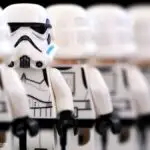You see your favourite movie stars and TV characters drinking on screen quite often – but can actors drink alcohol on TV?
Lights, camera, action! The television industry is an ever-changing world, where perspectives, beliefs, and norms evolve as the years roll by. From the era of black and white to the dawn of high-definition and streaming platforms, we have witnessed a captivating metamorphosis in entertainment. One element that has always piqued the curiosity of viewers is the depiction of alcohol consumption on television. Can actors really drink alcohol on TV, or do they employ some ingenious alternatives?
We’re going to uncork and serve you the truth behind the glass, the science of scenes that appear to show your favorite characters indulging in a boozy beverage or two, and the creative concoctions they use to bring their roles to life – and what could prove essential to ensuring realistic depictions, without compromising actors’ well-being.
So, grab a seat, pour yourself a (non-alcoholic) drink, and join us as we dive headfirst into this fascinating topic. Cheers!
The Art of Prop Alcohol
When actors portray characters indulging in alcoholic drinks on television, they generally rely on prop alcohol, which convincingly replicates the appearance of real booze.
Crafted by seasoned prop masters, these faux beverages come in a wide range of styles and can vary from watered-down black tea for whiskey to carved acrylic glass shaped like ice cubes.
The aesthetics of these fake drinks are crucial to maintaining the audience’s suspension of disbelief, allowing viewers to focus on the story rather than scrutinizing the realism of the props.
Prop alcohol and its presentation can be tailored to any scene, taking factors such as camera angles, time period, and actors’ preferences into consideration.
Sometimes, the actor might have specific dietary restrictions or strong beliefs about what their character would drink in a given situation, leading to changes in the script or the choice of prop alcohol.
On some occasions, food stylists or bartenders may be brought on set to lend their expertise to ensure the on-screen drinks look as genuine as possible.
Though real alcohol is not generally consumed during filming, there are no specific federal laws prohibiting its use on television. As a result, the decision to use prop alcohol often comes down to the production team’s preferences and the actors’ needs. Some may opt for non-alcoholic alternatives to maintain a clear head during filming, while others, particularly method actors, may choose to consume real alcohol to elevate their performance.
Ultimately, the art of prop alcohol and its use on television contributes to the immersive experience for viewers, allowing them to lose themselves in the story while consuming faux alcoholic beverages.
Convincing Faux Booze
Suspended disbelief is a crucial factor for viewers to feel immersed in a film or television show.
When it comes to alcohol consumption on screen, actors are rarely allowed to drink real alcohol for various reasons, such as health and safety concerns, insurance and liability issues, and maintaining their ability to perform at an optimal level.
As a result, the props department is tasked with creating non-alcoholic beverages that look convincingly like the real thing, ensuring that the audience can suspend their disbelief and stay engaged in the story.
One aspect of creating convincing faux booze is taking into account the many factors that determine the appearance of the beverage.
This may include the type of alcohol being mimicked, the lighting of the scene, and any potential dietary restrictions or preferences of the actors involved. Prop makers utilize various techniques and materials to create beverages that not only look like the real thing but are also safe for actors to consume.
Examples of common alcohol replacements include using color dyes in water for mixed drinks and cocktails, different types of juice for wine, ginger ale or a combination of sodas for champagne, and unsweetened tea or water for whiskey and other brown liquors.
A cocktail can be transformed into a mocktail and garnished with fruit wedges or faux frost to match the actor’s needs.
Even small details, like the use of non-melting ice cubes made from acrylic or silicone, can enhance the illusion of a real alcoholic beverage.
In addition, prop masters must avoid ingredients that may negatively affect an actor’s speaking voice, such as sweet or syrupy drinks and milk or chocolate-based beverages.
The art of creating convincing faux alcohol for film and television not only maintains the suspension of disbelief for audiences but also ensures the health and safety of actors on set. By employing various techniques to mimic the appearance and texture of real alcoholic beverages, prop masters contribute to the overall believability and immersive quality of a production.
Liquid in the Glass
Actors sometimes play a role in determining the liquid that is used to imitate alcohol on screen, but it’s usually the art director and film director’s choice.
These preferences are taken into consideration by prop masters and prop teams who are responsible for creating realistic-looking drinks that suit the actors’ needs and preferences.
It’s not uncommon for an actor to request a specific type of drink for their character just because they think it would be more fitting. For example, an actor might decide that drinking Scotch would be more in line with their character’s personality and story. In such cases, the script might even be altered to accommodate this preference. But decisions like these are usually made before filming begins.
Other considerations include dietary restrictions, such as an actor’s aversion to sugar or caffeine, or personal preferences for organic beverages.
Aprop master will usually gets a good sense of what an character would prefer by reading the script outline. At times, however, changes and decisions occur at the last minute, resulting in the team having to improvise using safe and relevant materials on hand.
Directors have many aspects to think about during a scene, so flexibility is key for the prop teams.
To create realistic-looking drinks, the industry favors those who are overly prepared. Maintaining a collection of iconic glassware and vintage liquor bottles often comes in useful, but these can also be picked up by props hiring firms.
Preparing for Prop Alcohol
The importance of preparing prop alcohol for television productions cannot be overstated.
This is because, in most cases, actors would not drink real alcohol on set, as becoming intoxicated could negatively affect the production.
For instance, they could slur or even forget their lines, exhibit unprofessional behavior, require multiple retakes of scenes, or make mistakes that disrupt the filming process.
Thus, prop alcohol is essential for maintaining a professional environment and ensuring that the production runs smoothly.
In order to create convincing prop alcohol, numerous factors must be considered. These include the appearance of the beverage, the glassware, garnishes, and even the actors’ personal preferences or dietary restrictions.
It is vital for prop masters to be prepared by having a clear understanding of the script, the scene’s time period, and the available resources for creating the faux drinks. Additionally, they should be ready to adapt to last-minute changes or requests from the actors or directors.
Experienced prop masters have honed their craft over the years by amassing a collection of iconic glassware, vintage liquor bottles, and various non-melting ice cube options.
Using their skills and resources, they can create mocktails, mimic the look of popular liquors with diluted tea, or even use soil-extending starch derivatives to replicate crushed ice particles in cocktails like Mint Juleps.
Their well-prepared arsenal allows them to create visually convincing prop alcohol that enhances the believability of the actors’ performances.
Preparing prop alcohol is a significant aspect of television productions, as it ensures a professional environment and maintains the integrity of the actors’ performances.
Prop masters must be adept at considering a wide range of factors and being prepared for any changes or challenges that may arise during filming.
It is their expertise that helps create the illusions that keep viewers engaged and immersed in the story.
Look Realistic
Mocktails and non-alcoholic drinks have come a long way in recent years, with many establishments and enthusiasts concocting delicious and convincing alternatives to traditional alcoholic beverages.
When it comes to portraying these drinks on screen or serving them to guests who prefer to avoid alcohol, making them look realistic is crucial.
Here are five ways to make mocktails and non-alcoholic drinks look authentic.
First, considering the presentation is key. Just like their alcoholic counterparts, mocktails should be served in appropriate glassware, such as martini glasses, wine glasses, or highball glasses. This not only enhances the overall aesthetic but also creates a sense of authenticity that makes the drinks more believable, whether they are being consumed on screen or in a bar setting.
Second, using quality ingredients can greatly improve the appearance and taste of the mocktail. Fresh fruit, herbs, and garnishes can bring vibrant colors, flavors, and aromas to the drink. Even using real fruit juice rather than concentrate can make a significant difference in the overall quality and appearance of the mocktail.
Third, incorporating the right techniques is essential when it comes to making mocktails look and taste realistic. Just like with traditional cocktails, mocktails often involve muddling, shaking, or stirring for proper mixing and flavor infusion. Mastering these techniques not only improves the overall taste of the drink but also adds to its visual appeal.
Fourth, layering and texture can create a sense of depth and realism in a mocktail that mimics an alcoholic beverage. For instance, if creating a virgin mojito, using crushed ice rather than cubed can make a significant difference in the texture and appearance of the drink. Similarly, layering different ingredients, such as fruit purees or syrups, can add visual interest and make the drink more convincing.
Finally, including a variety of mocktails and non-alcoholic drinks on the menu or on set can help normalize the experience for those who choose to abstain from alcohol. By offering a wide range of options, individuals can feel more comfortable in their decision not to drink without feeling left out or singled out. This not only helps create a more inclusive environment but also allows everyone to partake in the same social experience.
Making mocktails and non-alcoholic drinks look realistic involves careful presentation, quality ingredients, proper techniques, attention to layering and texture, and offering a variety of options. By considering these factors, establishments and individuals can create enticing and convincing non-alcoholic beverages that cater to a wide range of tastes and preferences.
More for Actors
- Casting Agents UK: What You Need To Know
- What Makes a Good Actor?
- How to Act Drunk for Actors on Stage and Screen
- Brechtian Acting Techniques & Exercises
- Film Set Etiquette: Professional Behaviour on Set
- What Do Actors Do If They Don’t Make It?
- Acting Terminology
- Self Tape Audition Mistakes to Avoid
- Meisner Acting Technique
- Can You be an Actor and a Filmmaker?
- How Do Actors Cry?
- How Do Actors Remember Their Lines?
- Can Actors Drink Alcohol on TV?
- Allen & Abel Acting Agency
- Do actors have personalities?
- Will Actors be Replaced by Robots, CGI or AI?
- Are Actors Smart?
- How Does An Actor Get A Role?
- Can Actors Have Tattoos?
- Casting Type: What Actor Type Are You?





















